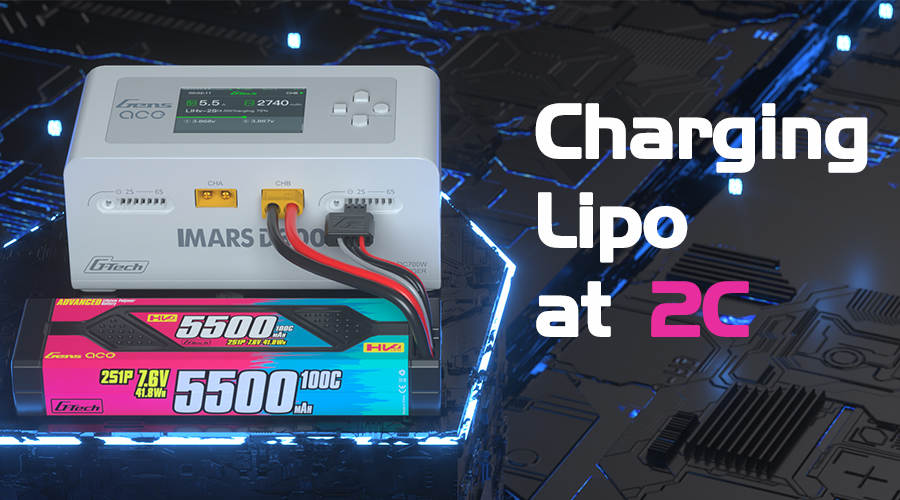As the demand for faster charging solutions continues to rise, many users are turning their attention to charging LiPo batteries at a 2C rate. While this approach promises to halve the charging time compared to the standard 1C rate, there are crucial considerations and potential implications to understand. In this article, we will delve into the technicalities, benefits, and drawbacks of the 2C charging method for LiPo batteries, ensuring you make an informed decision tailored to your specific needs.
Can LiPo batteries be charged at 2C?
When you are outdoors, you charge your LiPo battery at 2C, and when you’re at home, you opt for a 1C charging rate. Charging at 2C means that the battery gets charged faster. If a battery is charged at 1C typically takes about 1 hour to get fully charged, at 2C, it would roughly take 30 minutes. However, this is a general approximation. The actual charging time can be longer, especially during the final balancing phase. If there’s an imbalance in the voltages between the cells, the battery will require more time to reach equilibrium. This imbalance can extend the charging duration.
Also, the efficiency and speed of charging can be influenced by the charger itself. Quality chargers with superior charging algorithms tend to charge faster.
While charging at a higher C-rate, like 2C, can be more efficient in terms of time, it’s essential to be aware that consistently doing so might reduce the lifespan of the battery. It’s observed that if you always charge at 2C, your battery life could diminish somewhat. Even though many modern battery manufacturers claim that their batteries support fast charging, with discharge rates as high as 5C, some manufacturers suggest charging at 1C as a conservative approach. This conservative recommendation often pertains to warranty services and liabilities.
Is charging faster with a higher C-rate?
Yes, the principle is that a higher C-rate results in a quicker charge. However, the returns diminish as you go even higher. For instance, charging rates at 3C and 4C have been tested to be very close in terms of their efficiency. The higher the “C”, the less efficient the charging process becomes. Some professional RC racers, as per the information, prefer charging at 3C.
Is the principle behind charging and discharging the same?
No, they aren’t the same, and considering them to be can be dangerous. Charging and discharging a LiPo battery involve distinct chemical reactions. Overly rapid charging can damage the battery.
Tip: If you’re looking to increase charging efficiency but are concerned about the potential negative impacts of a higher C-rate on the battery, it’s a good idea to have several spare batteries. Alternatively, you can use dual-channel or multi-channel chargers for better efficiency without compromising battery health.
Common Questions (FAQ)
Q: What does the “C” in LiPo batteries mean?
A: The “C” in LiPo batteries refers to the battery’s discharge rate, which gives an indication of how quickly the battery can provide its stored energy. The formula to determine the discharge current in amps is:
Discharge Current (A) = Battery Capacity (Ah) × C-Rating
Q: Is a higher “C” rating always better?
A: It’s essential to match the “C” rating to the requirements of the device. Using a battery with an excessively high “C” rating might not offer any performance advantage and could be an unnecessary expense. Conversely, using a battery with too low of a “C” rating in a high-demand application might result in underperformance or even damage to the battery.
Q: What is voltage balancing?
A: Voltage balancing refers to the process of ensuring that each cell in a multi-cell LiPo battery maintains the same voltage level. If one cell becomes significantly lower in voltage than the others, it can become damaged during subsequent charge and discharge cycles. A balanced charger ensures that each cell is charged to the same voltage, thus preventing any cell from being overcharged or undercharged. This process promotes the health, safety, and longevity of the battery.



Leave a Reply